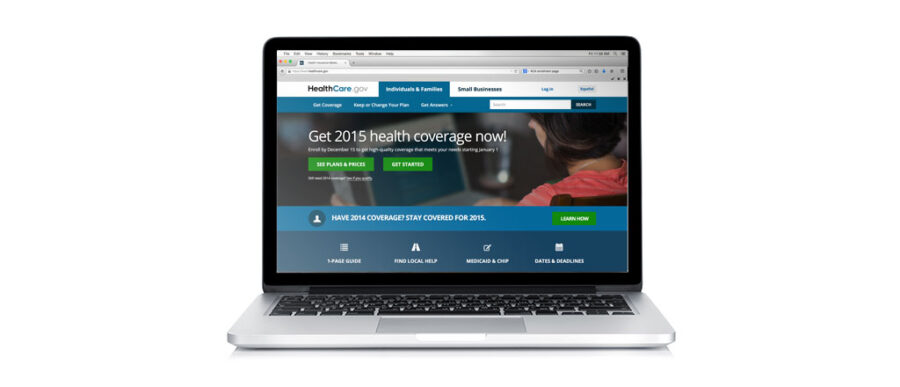Enrollment began last weekend for Americans to get health insurance in 2015 through the federal HealthCare.gov and state marketplaces amid expectations of a smoother process and more transparency than in the first year. As the health insurance marketplace enters its second year, the focus is on helping consumers gain a better understanding of premiums pricing, deductibles and provider networks.
Consumers face higher premiums but could also see more insurers in their states and more competitive plan offerings. They are also adjusting to narrower network access for lower premiums — which, in combination with incentives to doctors, promises to improve quality of care. Meanwhile, the politicization of the Affordable Care Act (ACA) means it faces continued assaults in a Republican-controlled Congress well into the 2016 presidential election season.
“The No. 1 concern is premiums. This year, premiums will go up on average about 3%,” said Wharton lecturer of health care management Daniel N. Mendelson, who is also CEO and founder of Avalere Health, a health care consulting services firm in Washington, D.C. “While many consumers focus on premiums, it is important to take a more holistic view and look at not just premiums, but also at co-pays and network access,” added Wharton professor of health care management Amanda Starc. They discussed the road ahead for the health insurance marketplace on the Knowledge at Wharton show on Wharton Business Radio on SiriusXM channel 111. (Listen to the podcast at the top of this page.)
Mendelson encouraged consumers “to go out and shop because premiums in some plans will increase by much more than [the average of 3%].” Premiums on the most popular plans in the market are higher by 10% over those of last year, and that could mean “hundreds of dollars” for individuals, he added.
Consumers who are reluctant to shop around “leave a lot of money on the table,” said Starc. That is especially true for people who in the past have had coverage through an employer but now want to buy it on their own. “A lot of times consumers can experience some sticker shock when they realize just how much health insurance costs,” she added.
“The ACA has stimulated rethinking on how clinicians are paid to make sure that incentives are aligned with the health outcomes that we want.” –Daniel Mendelson
Wiser in Year Two
Both insurers and consumers will be wiser after the first year of the health care marketplace, said Starc. She expected insurers to understand demand and costs better and to adjust premiums accordingly, including fixing mispricing, if any, from the first year. They may also pull out of some states and enter new states, she added.
Consumers are adjusting to narrower networks, which Mendelson found “remarkable and surprising.” Starc said research in Massachusetts — which passed a health care reform law in 2006 mandating that every resident obtain some form of insurance coverage — showed that consumers are willing to accept narrow network plans if they are accompanied by lower prices.
Such narrow networks also help improve quality of care, said Mendelson. He, too, cited research from Massachusetts, which showed that with narrow networks, insurers can “engage more positively and proactively on quality measures.” They can also structure contracts with incentives for physicians. “If there is a financial incentive for a physician’s practice to make sure that everybody over the age of 65 has a flu shot, they tend to accomplish those things,” he said. “You tend to see any economic actor doing what they are incented to do, and health care is no different. The ACA has stimulated rethinking on how clinicians are paid to make sure that incentives are aligned with the health outcomes that we want.”
“[It] is a hard needle to thread, but one that is important — preserving choice, but guiding choice in ways that help consumers.” –Amanda Starc
Need to Educate Consumers
All the same, many Americans find health insurance plans too complicated and the deductibles and financial features hard to understand, said Starc. Most people tend to buy the cheapest plans, she added, again citing research from Massachusetts. “We have research that shows that the cheapest plan in any given market gets a 20% bump in enrollment,”she said. Mendelson noted, “The cheapest plan is not necessarily the cheapest for a consumer who has a serious chronic illness.”
Against that backdrop, Starc would like the government, state exchanges and insurance companies to “help get the word out” and educate consumers on how to choose the plan that is best for them.
Starc called for innovative ways to overcome communication challenges, and cited the example of Massachusetts. The state roped in the [Boston] Red Sox baseball team, which in the seventh inning of every game told audiences about the need to get health insurance, she said. It also spruced up its health insurance website, standardized features and made continuous improvements to make it easy for consumers to make choices, she added. “That is a hard needle to thread — preserving choice, but guiding choice in ways that help consumers [where] they are not overwhelmed and they can locate the best plan for their needs.”
In the year ahead, Mendelson expected between nine million and 10 million people to sign up for health insurance. The prospect of penalties could prompt many to enroll, which could be up to 1% of income, he added. In any event, Starc said people must realize that they need to enroll because the costs could otherwise be overwhelming. “This is a product that insures you against going bankrupt,” she said.
Mendelson also expected continued challenges to the ACA by Republicans. He also foresaw the Democrats ceding ground on subsidies or other features, but no prospects of a “brokered solution.” At the same time, the health care marketplaces will become more efficient, felt Starc. “What we will see over time is learning what works and what doesn’t,” she said. “Iterate and it will get marginally better over time.”


